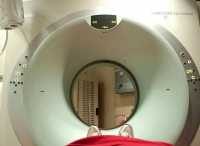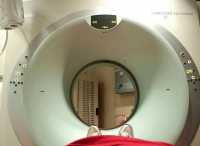Author Interviews, Cancer Research, CT Scanning, JAMA, Lung Cancer / 16.08.2018
How Common is Overdiagnosis of Lung Cancer with Low Dose CT Screening?
MedicalResearch.com Interview with:
 Dr. Bruno Heleno MD PhD
Assistant Professor | Professor Auxiliar
NOVA Medical School | Faculdade de Ciências Médicas
Universidade Nova da Lisboa
MedicalResearch.com: What is the background for this study? What are the main findings?
Response: The Danish Lung Cancer Screening Trial (DLCST) is a randomized controlled trial which enrolled 4104 participants (aged 50-70 years; current or former smokers; ≥20 pack years; former smokers must have quit <10 years before enrollment) to either 5 rounds of screening for lung cancer with low-dose CT-scans or to no screening.
After 10 years of follow-up, there was a 2.10 percentage points lung cancer absolute risk increase with low-dose CT-screening. Overdiagnosis, i.e. the detection of cancer that would not progress to symptoms or death, was estimated at 67.2% of the screen-detected cancers.
(more…)
Dr. Bruno Heleno MD PhD
Assistant Professor | Professor Auxiliar
NOVA Medical School | Faculdade de Ciências Médicas
Universidade Nova da Lisboa
MedicalResearch.com: What is the background for this study? What are the main findings?
Response: The Danish Lung Cancer Screening Trial (DLCST) is a randomized controlled trial which enrolled 4104 participants (aged 50-70 years; current or former smokers; ≥20 pack years; former smokers must have quit <10 years before enrollment) to either 5 rounds of screening for lung cancer with low-dose CT-scans or to no screening.
After 10 years of follow-up, there was a 2.10 percentage points lung cancer absolute risk increase with low-dose CT-screening. Overdiagnosis, i.e. the detection of cancer that would not progress to symptoms or death, was estimated at 67.2% of the screen-detected cancers.
(more…)
 Dr. Bruno Heleno MD PhD
Assistant Professor | Professor Auxiliar
NOVA Medical School | Faculdade de Ciências Médicas
Universidade Nova da Lisboa
MedicalResearch.com: What is the background for this study? What are the main findings?
Response: The Danish Lung Cancer Screening Trial (DLCST) is a randomized controlled trial which enrolled 4104 participants (aged 50-70 years; current or former smokers; ≥20 pack years; former smokers must have quit <10 years before enrollment) to either 5 rounds of screening for lung cancer with low-dose CT-scans or to no screening.
After 10 years of follow-up, there was a 2.10 percentage points lung cancer absolute risk increase with low-dose CT-screening. Overdiagnosis, i.e. the detection of cancer that would not progress to symptoms or death, was estimated at 67.2% of the screen-detected cancers.
(more…)
Dr. Bruno Heleno MD PhD
Assistant Professor | Professor Auxiliar
NOVA Medical School | Faculdade de Ciências Médicas
Universidade Nova da Lisboa
MedicalResearch.com: What is the background for this study? What are the main findings?
Response: The Danish Lung Cancer Screening Trial (DLCST) is a randomized controlled trial which enrolled 4104 participants (aged 50-70 years; current or former smokers; ≥20 pack years; former smokers must have quit <10 years before enrollment) to either 5 rounds of screening for lung cancer with low-dose CT-scans or to no screening.
After 10 years of follow-up, there was a 2.10 percentage points lung cancer absolute risk increase with low-dose CT-screening. Overdiagnosis, i.e. the detection of cancer that would not progress to symptoms or death, was estimated at 67.2% of the screen-detected cancers.
(more…)




